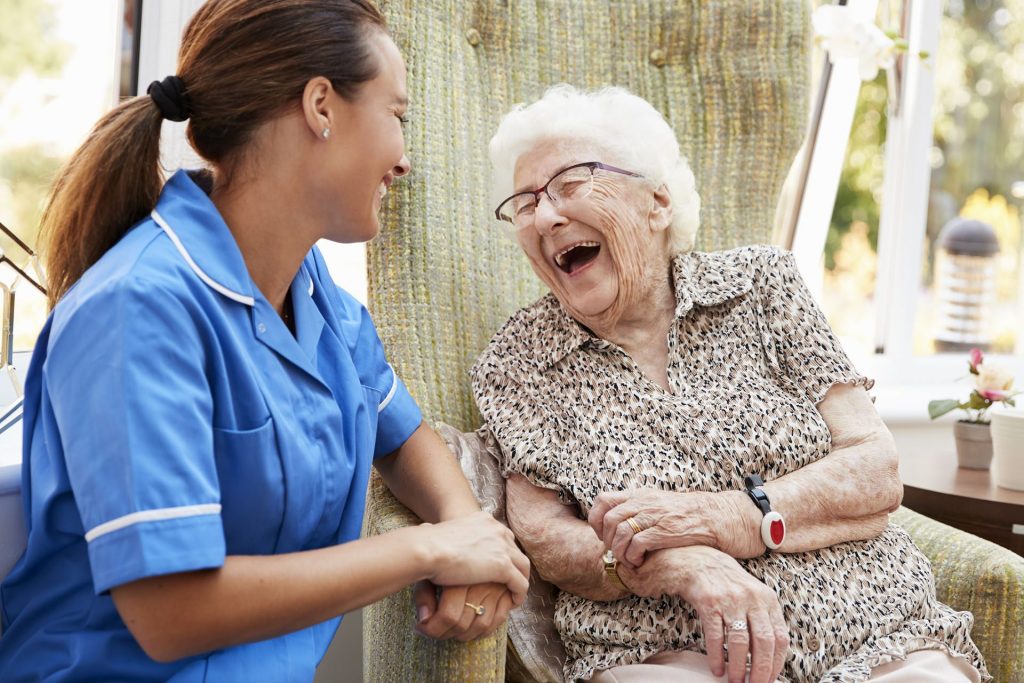
Chronic obstructive pulmonary disease (COPD) refers to a group of diseases that cause airflow blockage and breathing-related problems. Currently, COPD affects 16 million Americans who have this disease and millions more who have not yet been diagnosed. While there is no cure for COPD, it can be treated, and a flare-up can sometimes be prevented with enough consideration.
What is a COPD flare-up?
A flare-up is the worsening of your COPD symptoms, typically due to triggers that include allergens or chest infections from a virus, such as the flu. A flare-up can make people feel sick, and a bad one could even put them in the hospital and might make their COPD more severe. The fewer flares-up a person has, the better, so being vigilant about paying attention to the following symptoms and prevention tips is important.
Symptoms and prevention
If a loved one has been affected by COPD for a while, they know how they feel on a typical day with their breathing and how much they cough. If they’re more short of breath than usual or wheeze and cough more, these might be warning signs. Other symptoms include:
- Shortness of breath
- A sore throat
- Cold- and flu-like symptoms
- A change in mucus color, which may be brown, yellow, or green
- Producing more mucus, which may be stickier and thicker than usual
- Swollen ankles
- Wanting to sleep sitting rather than lying down
- Waking up at night coughing
- Waking up with a headache
- Fatigue
There are some ways to prevent a flare up, including:
- Quitting smoking and avoiding second-hand smoke
- Having a medical-grade pulse oximeter
- Using oxygen, if a doctor prescribes it
- Taking all medications as directed.
- Attending regular health check-ups
- Taking care of yourself and trying to avoid colds, flu, and other infectious diseases
- Having all the recommended vaccinations
- Washing your hands frequently
- Avoiding pollutants, including smoke and dust, where possible
- Staying as active as possible
- Eating a nutritious, well-balanced diet
- Following your COPD action plan
What to do when flare-ups happen
If your loved one’s already been diagnosed with COPD, their doctor has most likely given them instructions, medications, and an inhaler. If this is correct and a flare-up does happen, follow these instructions:
- Mild flare-up: They’re more breathless than usual but aren’t coughing up any more than usual. In this case, use the inhaler.
- Moderate flare-up: They’re coughing up more than usual and their inhaler isn’t helping. Take appropriate medicine prescribed by their doctor and call them.
- Severe flare-up: They keep getting worse despite the medication or have a fever. Call the doctor, or if you think it’s more urgent, call 911.
How can an in-home caregiver help people with COPD?
Living with COPD can be a challenge. Performing the simplest tasks can become really difficult and exhausting. This is where the help of an in-home caregiver can be hugely beneficial.
They can assist with some daily tasks so that you and your loved one can conserve your energy to do the things you enjoy. They can grocery shop, prepare nutritious meals, assist with bathing and dressing, take your loved one to medical appointments, and run errands. Since dust and allergens are harmful to people with COPD, caregivers can provide homemaking care by dusting, changing linens, and doing laundry. They can also monitor and evaluate your loved one’s respiratory symptoms, which is one of the major benefits of in-home care.
If you’re interested in finding out more about in-home care, you can schedule a free in-home meeting with a complementary safety assessment today!


